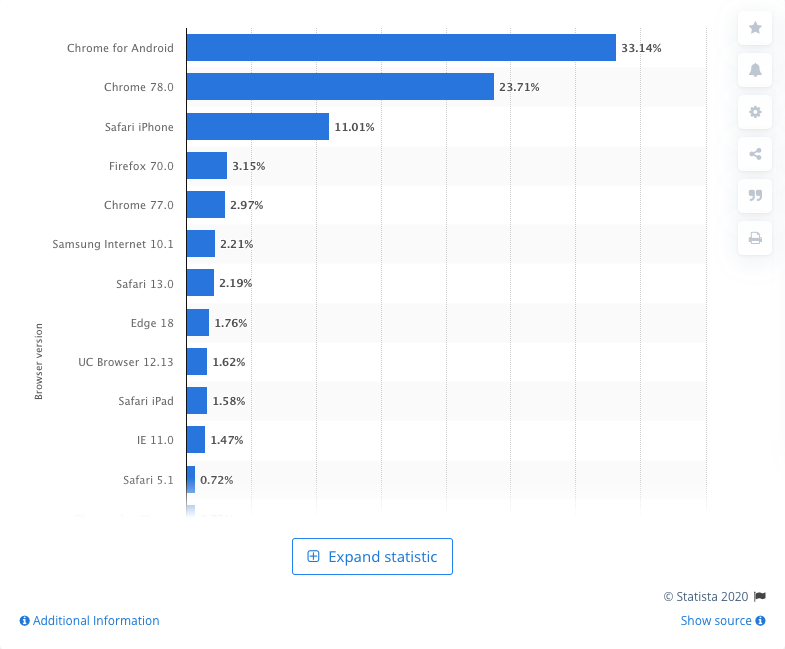No More Cookies in the Browser Jar
Bradley Surratt, February 15, 2021
Summary
Well, the (digital) cookie has finally crumbled. Or perhaps I should say, it's in the act of crumbling. Confused? Let me explain... Over the process of time cookies have become the bread and butter of the Internet, and are currently the most common method for identifying users online and providing a personalized browsing experience.1 However, not all is sugar and spice and everything nice.
As privacy concerns mount, the tech giants of the world (Google, Facebook, Apple, etc.) are under incredible pressure to give users more control over how their personal information is being stored and processed. Starting in 2022, Google is planning to phase out all 3rd party cookies, which could have huge repercussions for businesses and advertisers alike. In this blog, we'll shed some light on the issues and possible solutions as this high stakes situation plays out on a global scale, in real time.
First off - what is a cookie?
Unfortunately, we're not talking about the kind that Grandma bakes with yummy chocolate chips. Instead, we're talking about digital cookies - the ones that by definition are: "a small piece of data stored on a user's computer by the web browser, while viewing or interacting with a website." 2 In essence, cookies are designed to save and recall useful information about a user's digital journey through your website - and in some more invasive cases - the journey that takes place after exiting that website.
Just like Grandma's cookies, not all digital cookies are created equal. In fact, there are several different types (dare I say, flavors?) of cookies which I'll explain now:
- Session Cookies - are stored in the browser itself (not written to a file) and last only as long as a user is on your website. A common example of a session cookie is the shopping cart feature found on most e-commerce sites. This type of cookie stores information (product size, color, quantity, etc.) on all items you place within the shopping cart; so that when you visit the checkout page, your precious cargo is there ready to purchase. Without this cookie, your shopping cart would be emptied every time you clicked on a different page... and that my friends is not good for business.
- First Party Cookies - are written by code on your website and can be read only from your website. This means data gathered from these cookies cannot be shared outside your website's environment. First party cookies are used for remembering things like user log-in details, language preferences, and previous webpage visited. Without first party cookies, each time you add a new item to your shopping cart (from another page on the site) it would be treated as a new order. Obviously, not a great thing for business either.
- Third Party Cookies - are typically created for advertising purposes (such as cross-site tracking, retargeting and ad-serving) and are loaded from an external site when a user visits your website. For example, if a user decides to abandon the item(s) in their shopping cart - third party cookies could capture that decision, and send a signal to ad servers (such as Google Ad Sense, DoubleClick, or many others) to display relevant ads to that user across other websites. The data that these cookies provide is the equivalent of digital gold for advertisers, but is arguably cause for privacy concern among many consumers.
What's happening to 3rd party cookies...and why?
It's important to note that (so far) third party cookies are the only type slated for a phased removal by 2022. Session cookies and first party cookies aren't going anywhere - at least not for quite some time. Privacy concerns surrounding third party cookies have been a hot topic from the beginning, when they were first created in the mid 1990's. Some users cite that third party cookies violate their privacy by "following them around" the internet with unwanted ads, which is called retargeting. Concerns over user privacy was further pushed into the spotlight by the passing of the GDPR ruling in 2018, which now requires websites (particularly those serving users based in the European Union) to allow users to "opt-in" to cookie tracking (like ours below).

Many marketers have been preparing for the demise of third party cookies for years. In fact, some web browsers (most notably Firefox and Safari) already have third party cookie tracking features turned off by default. Google Chrome on the other hand has been a bit more reluctant - likely because 90% of Googles revenue is generated by advertising. 3 The decision made by Google to phase out all third party cookies by 2022 is an especially big deal for digital advertisers because as this graph shows, Google Chrome is by far the most popular browser in existence. 
Graph Source: https://www.statista.com/statistics/268299/most-popular-internet-browsers/
Business Impact
The ramifications surrounding the shift from third party cookies is monumental. A recent study performed the Article 29 Working Party determined that "on average, websites were found to place about 50 cookies on someone's browser during that user's first visit to the website." 4 To replace the data derived from these cookies, businesses will need to:
- Develop new ways to target users with relevant information
- Explore alternative methods of collecting and measuring attribution
- Create better tools to properly measure marketing efforts
Evidence strongly suggests that the less precise the audience targeting, the lower the ad revenue. In other words, If companies decide to do nothing, their current advertising dollars will not be nearly as effective.
Possible Solution
One of the more promising solutions Google is considering is a Privacy Sandbox that sets the standards for all ad targeting, measurement, and fraud prevention. Essentially, third party cookies would be replaced by several application programing interfaces (API's). This will allow advertisers to use each API to receive aggregated data on conversion and attribution metrics.
While there's still a great deal of work to be done before Google's privacy sandbox becomes a reality - it's at least a path towards resolution. The jury is still out whether or not it's a solution that will give advertisers the data they need, and the user the security they want. One thing's for sure - in the word's of Bob Dylan, "The times, they are a changin".
3|SHARE Can Help You Prepare
3|SHARE has developed a robust four-step process to help prepare you and your website for the end of third party cookies. Our scoping methods will leave you with a solid list of recommendations and ready to implement solutions based on Privacy Assessment, Data Integrity Assessment, Data Layer Implementation, and Custom Engagement.
Get in touch with us and schedule your Cookie Preparedness Test today!
.png?width=1968&name=Screenshot%20(283).png)
SOURCES
- https://clearcode.cc/blog/difference-between-first-party-third-party-cookies/
- https://en.wikipedia.org/wiki/HTTP_cookie
- https://cookie-script.com/all-you-need-to-know-about-third-party-cookies.html
- https://www.termsfeed.com/blog/cookies-audit/
- https://digiday.com/marketing/wtf-googles-privacy-sandbox/
Topics: Adobe Experience Manager, Digital Marketing, Professional IT Consulting Services

